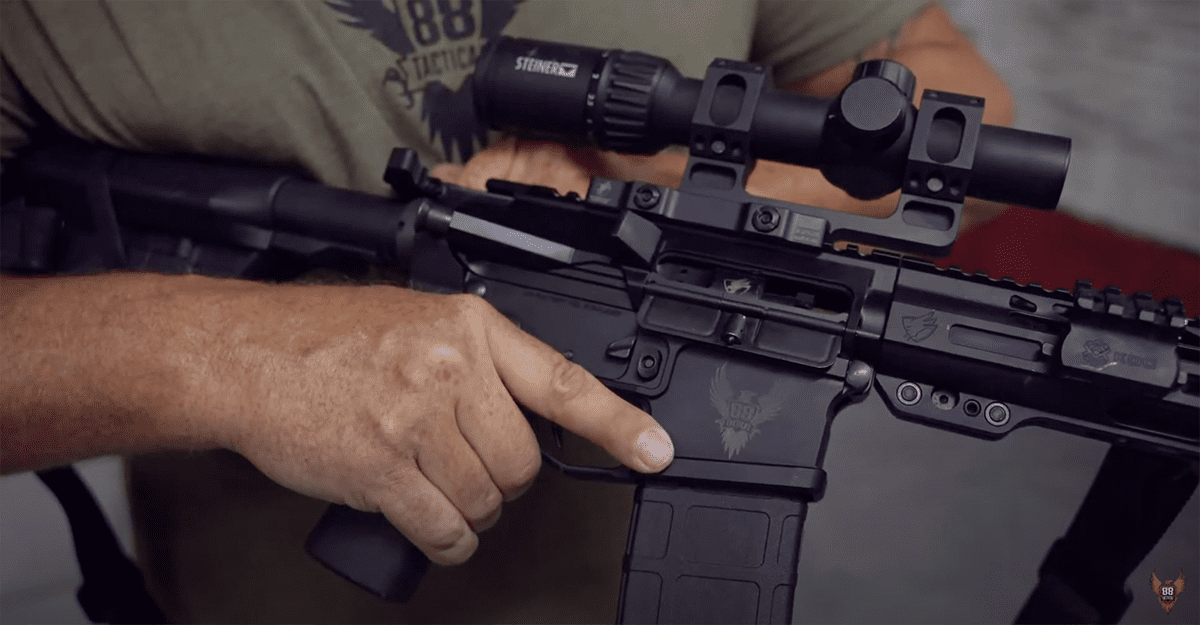By: Phil Chaney, Mobile Training Team Instructor
M4 Weapon System: Press Check
As in any loading procedure, make sure you have a safe weapon and safe direction. Lock the bolt to the rear – visually and physically inspect.
How to Load & Status Check an AR-15
Check your ammunition
When contemplating the selection of ammunition to pair with an AR-15, meticulous attention to detail must be paid to ensure that the ammunition’s caliber matches the gun’s specifications. Not only that, but the ammunition’s grain weight, which can affect the bullet’s velocity, trajectory, and recoil, must also be taken into account. Indeed, even the ammunition’s intended use, whether it’s for hunting, target shooting, or self-defense, cannot be overlooked when selecting the appropriate ammunition for the AR-15. Ensuring that the correct ammunition is paired with the AR-15, therefore, is crucial, not only to guarantee the gun’s optimal performance but also to safeguard the user’s well-being and promote the gun’s reliability.
Nighttime Press Check
- Grab the magazine and feel the top of the round. Pay attention to whether the top of your first round is on the left side or the right side.
- Insert the magazine and give it a push-pull to make sure it’s secure.
- Hit the bolt release.
- Hit the forward assist to make sure it’s fully seated.
Next:
- Hit the magazine release and remove the mag, conducting another press check.
- The top of the round should be on the opposite side now, indicating that there is around in the chamber.
- Insert the magazine and give it a push-pull to make sure it’s secure.
- Hit the forward assist to make sure it’s fully seated.
The Problem with AR-15 Visual Inspection
Conducting a visual check to see the round in the chamber could cause problems, especially at night when malfunctions may be trickier to solve.
In the process of running the bolt back, you could pull it back too far, causing an extraction. You could also potentially cause a double feed malfunction by not sending the bolt forward with enough force to fully seat the round after pulling it back for the visual inspection.
Some operators like to do a last-minute chamber check using their fingers to physically touch the round in the chamber. However, this could cause the same potential problems as the visual check.
To alleviate the possibility of extraction or double feed, we recommend doing the press check.
Carbine (AR-15) Training Courses at 88 Tactical
INTRO TO CARBINE
Intro to Carbine is perfect for people who are new to semi-automatic rifles or those who are considering buying an AR-type carbine.
BASIC CARBINE (AR-15) LEVEL 1
During this 8-hour course, participants will review gun safety and discuss equipment considerations, ammunition, and accessory setup for AR-15 rifles.
BASIC CARBINE (AR-15) LEVEL 2
Basic Carbine Level 2 builds on the fundamentals of defensive shooting presented in Level 1.
INTERMEDIATE CARBINE (AR-15) LEVEL 3
Students will develop speed and precision while taking tactical measures to ensure their safety and make better decisions in complex environments.


